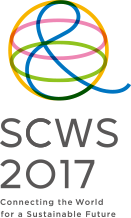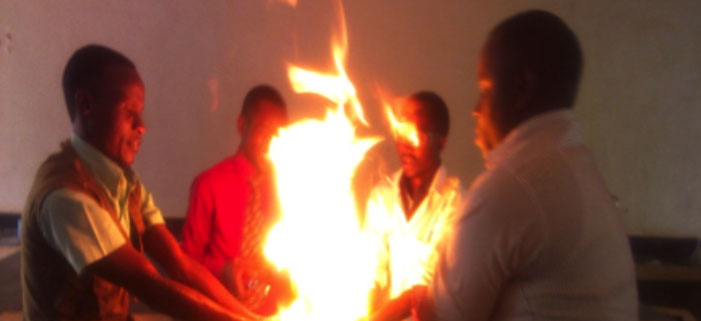
Goal 4: Ensure inclusive and quality education for all and promote lifelong learning
By Martin Kafeero, Managing Director, Source of the Nile Science Centre, Kampala, Uganda
It all starts from the “15 drops of water,” a slogan given by one of the colleagues of the 15 scientists selected under the Australian Awards Fellowship to pursue Science Centre Capacity-Building Leadership Training at the Australian National University (ANU) from April to June 2017.
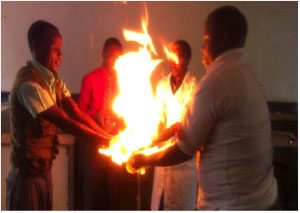
Demonstrating the specific heat capacity of water to teachers of New Vision High School, during our science outreach in Kigali, Rwanda
Source of the Nile Science Centre (SNSC) is an emerging informal-learning center located in Kampala, Uganda, the country said to be the source of the longest river in the world. I first started to see the vision for a science center in Uganda unfolding before me while participating in the Science Centre Capacity-Building Leadership Training with other 14 African comrades at the ANU’s Center for the Public Awareness of Science (CPAS).
I had been working with Initiative for Science & Technology-Tanzania (InSciT-Tanznania), an informal science learning organization I founded in the United Repulic of Tanzania in 2013 with help from Tanzanian friends. Seeking better skills in science outreach and conservation projects, I was awarded two remarkable Fellowship Awards, including; the the ASTC Lee Kimche McGrath Worldwide Fellowship in 2016 and then the Australia Awards Fellowship, which helped give birth to the SNSC.
During the training in Australia, I was lucky to interact and make links with founders and officers at the many science centers I visited, including Questacon, Bendigo Discovery Center, Wollongong Science Centre, Early Start and Power House. Besides these visits, the fellowship also afforded development and leadership sessions with Mike Goore, Questacon founder; Sue Stocklmayer, founder of CPAS; and Graham Walker, manager of Science Circus Africa, among others. The inspiration at CPAS and the institutions I visited—especially Questacon—triggered the curiosity and passion that enabled me to establish the Source of the Nile Science Centre in Uganda.
Why a Science Center in Uganda?
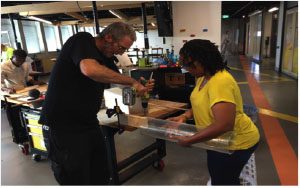
Graham Durant, training one of our African colleagues in exhibit building at Questacon
East Africa is in a highly competitive global economic environment. Traditional systems of learning, such as exam-oriented methods of teaching, are likely to continue crippling skills-aquisition among learners if not checked. Since independence, Uganda, like many other African countries, has lacked creative problem solvers as far as the science, technology, engineering, and mathematics (STEM) fields are concerned, due to the failure of its education ministries to develop skills-based learning opportunities for learners.
Source of the Nile Science Centre has therefore been established to help meet Uganda’s skills challenge. It is also expected to be a hub for innovation education initiatives. Driven by the vision of a nation where all people value STEM to inform decision making, empower individuals, enrich lives, and help people discover the pleasure and relevance of STEM in their everyday lives, SNSC is located in a 75-square-meter (800-fquare-foot) room donated by Bishop East Primary School in Mukono. Currently, it serves as a store and a workshop for exhibit construction while much of the organizational-development effort is put in science outreach.
Since the establishment of the center in July 2017, our science outreach programs have so far reached out to more than 8,000 students in Uganda. More exciting, in August this year, we got an invitation to conduct science shows in Kigali, Rwanda, where we visited 10 schools, engaging their learners and teachers in unforgettable experiences that make science fun.
In spite the initial success of our science outreach, we still face a big challenge of space for the center. We need a building facility sized up to 500 square meters (5,400 square feet) in order to set-sail on the pending activities such as exhibit building, among others. We envision Source of the Nile Science Centre to be called a “wonder” of informal science learning across East Africa, with cutting-edge technology, innovation education initiatives, and a planetarium.
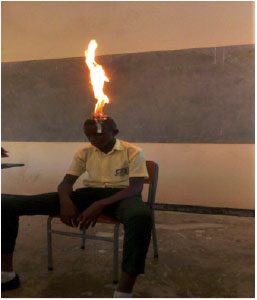
Science show at Kigali Parents school
As part of our forthcoming programs, we plan to implement the “Ghetto Science Outreach”. This TV show, scheduled to be launched on the International Science Center and Science Museum Day on November 10, will aim at communicating the relevance STEM to the street kids of Kampala city through fascinating science experiments. The program is part of SNCS’s efforts to contribute to the achievement of the global Sustainable Development Goalss. The program will be implemented in partnership with Kisenye suburb, a place famous accommodating street kids in Kampala.

